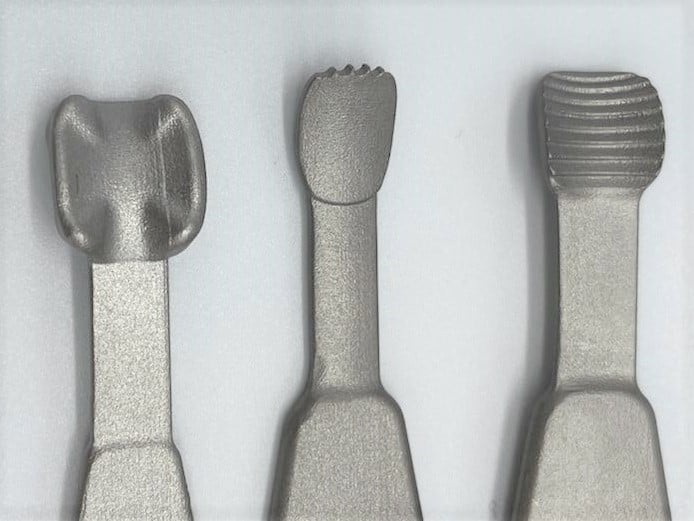
We’re all feeling the impact of global events, including COVID-19, The Russo-Ukrainian War, the China-United States trade war, truck driver shortages, the winter storms in Texas, container shipment disruptions, The Suez Canal blockage, increased transportation and raw material costs, and so on. The perfect storm for the past two years.
One of the most effective ways to overcome these resulting shortages is by working with a contract manufacturer that utilizes a broad range of in-house technologies, including additive manufacturing. The key is finding a partner with the capability and capacity to help medical device engineers turn design concepts into functional parts that are ready for Food & Drug Administration trials.
Multiple technologies mean multiple solutions. When a supply chain issue delays or eliminates your preferred process for manufacturing, all is not lost. We can work with your engineering and design teams to select one of our many alternative manufacturing processes or materials that provides a functional prototype or production part in a timely manner. This is accomplished through a combination of process range, material capacity, and product experience in 3D-printed and conventionally manufactured parts for the medical device industry. This results in the ability to deliver high-quality parts with a much shorter turnaround time.
According to Garrett Spurgeon, product development vice president with NextStep Arthropedix, “Traditional contract manufacturers typically offer lead times that are more than three months. Metalcraft Solutions’ additive manufacturing division has allowed us to provide custom and prototype devices that rival CNC-machined parts in a matter of days or weeks.”
Some of the necessary in-house processes include: additive manufacturing, 3- and 5-axis machining, CNC lathe, swiss turning, wire EDM, laser cutting, stamping and forming, laser marking and engraving, and heat treating, finishing, and polishing. Multiple processes in-house will compress the manufacturing time by eliminating handoffs from subcontractor to subcontractor. This also means a single source is responsible for the quality control and documentation of all manufacturing processes.
You’ll want someone who can work with metals, including PH17-4 stainless steel, 316L stainless steel, cobalt chromium, and aluminum, as well as plastics like PEEK, Delrin, and Ultem. Our technologies can process billets, bar stock, sheet stock, and powdered materials.
Finally, it’s important to work with someone experienced in a variety of medical device products, including obturator rods, osteotomes, hemostats, endoscopic connectors, trocars, clamp inserts, orthopedic surgical support devices, broaches, and more.
Here at Metalcraft Solutions, we have these processes, materials, and products under one roof and have served many satisfied clients, including Aldo Marini, design engineer, Maxx Orthopedics, who states, “The finished 3D printed products were precise, had a medical grade finish, and were ready for surgery."
If you’re interested in additive manufacturing for medical device prototyping or production, let’s talk about it. As a one-stop shop for all of your production needs, we can discuss 3D printing as well as conventional manufacturing methods. We'll make sure you get the best machining process for your needs.
325 Morgan Ave.
Akron, Ohio 44311
330-773-5173